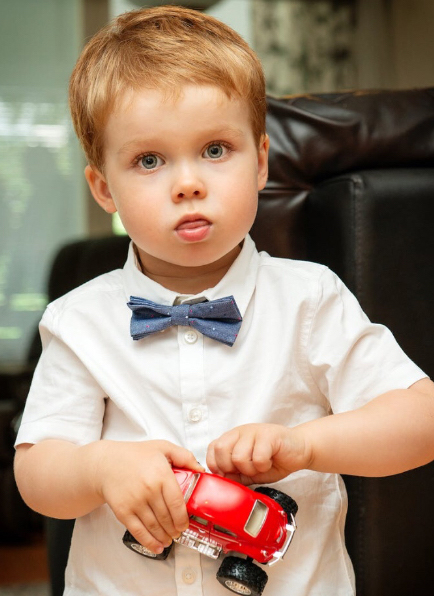Toys and Language
Toys Matter for Building Language

Giving one-dimensional toys like a ball, car, or train to a boy is typically not enough to stimulate rich language. This is especially true for a child under 3. You may use phrases such as “throw ball”, “push car”, “go choo choo”, “ball up”, but eventually you feel stuck looking for more words to use. If you give him a doll or figurine, you can model many everyday actions like “walk”, “sleep”, “eat”, “drink”, “clap”.
For children under 3, realistic props tied to everyday routines are ideal for building meaningful language. Pairing a doll or figurine with some play foods or a doll house is even better. 
For older children, props are not necessary for play. In other words, a stool can be a garage, or a chair can be a rocket ship.
While little girls have a left-brain advantage for learning language, we also tend to provide our little girls with richer play materials such as dolls, doll houses and play kitchens. These types of toys encourage narrative language which is tied to early literacy. Currently, there are many neutral colored play kitchens for little boys.
Use a Baby Boy Doll or a favorite stuffed animal with our little one’s old baby clothing to simulate dressing routines. Pair everyday words with these play routines, as in “change diaper”, “shoes on”, “clean face” (with your little one’s baby wipes) and “hands up” (as we lift the doll’s hands up to place the shirt).
Use words first to comment on play objects and actions. Eventually, we can also provide voices to represent the dolls or characters. As your little one approaches 3.5- 4 years, he or she will begin to pair a voice with a play character. An important language skill for a 4-year-old is retelling stories. We often see little girls recreating stories from daily routines using pretend play toys. Doll houses and play kitchens are terrific for enhancing these skills.
When we don’t provide these hands-on realistic types of toys to our little boys they are placed at a disadvantage. There are many neutral wooden doll houses on the market. An example is the Melissa and Doug fold and go house.
Who knows maybe your little boy will be the next master chef?
We are a participant in the Amazon Services LLC Associates Program, an affiliate advertising program designed to provide a means for sites to earn advertising fees by advertising and linking to Amazon.com. Some links may be affiliate links. We may get paid if you buy something.